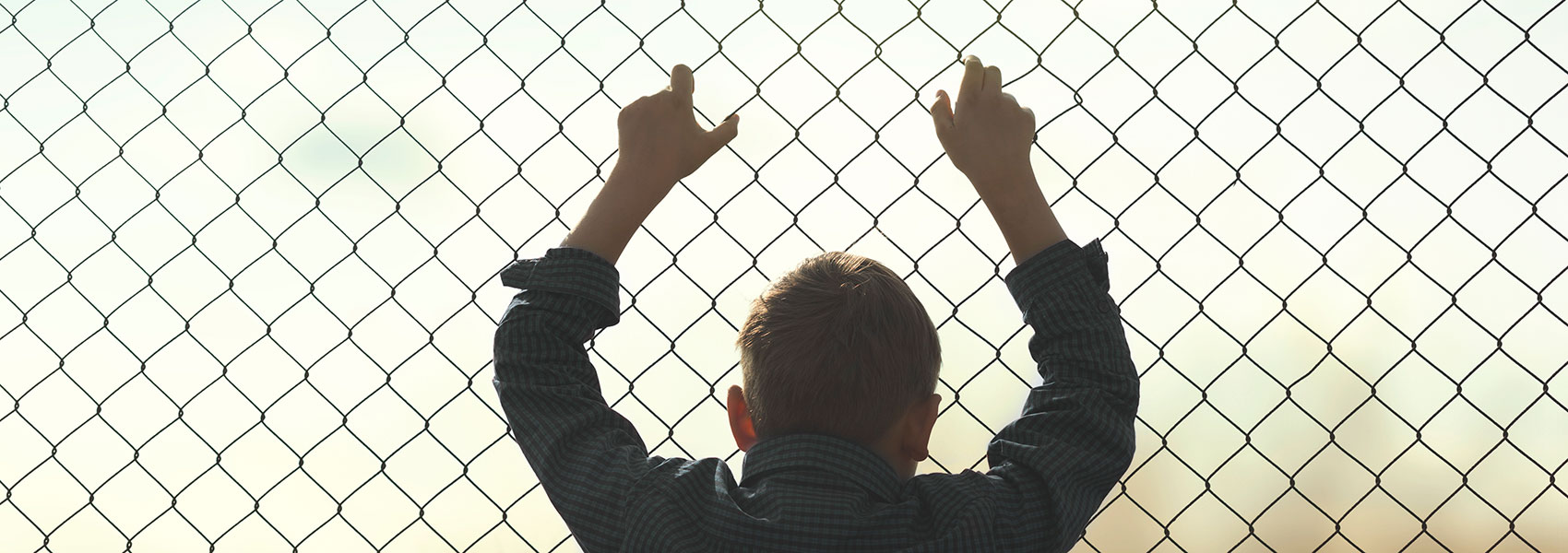Unaccompanied minors at the border: What’s happening and how you can help
Unaccompanied children need safe and loving foster homes now.
by Brad Kramer, content writer

What is going on right now at the border?
Fleeing violence and extreme poverty in their home countries, large numbers of Central American children and families are seeking asylum at the southern border of the United States—including thousands of children unaccompanied by parents or legal guardians.
The current situation is part of a years-long crisis.
In the past few years, the dismantling of an already broken asylum system made it nearly impossible for children and families to seek asylum at the southern border, regardless of their background or circumstances.
This has led to a backlog of asylum-seekers, many of whom cannot return to their countries because of life-threatening situations and have no choice but to remain in dangerous, makeshift camps along the border, where gangs run rampant, and violence is common.
The COVID-19 pandemic has only worsened the scope of the problem. In 2020, due to health concerns, the federal government banned all asylum-seekers from entering the country. This policy is still in place, and many adults and families are being turned back at the border. But the current administration, following a 2020 federal court order, has changed the rule for children unaccompanied by a parent or legal guardian.
Expelling these children back into Mexico or Central America would put them at severe risk of being abused, trafficked, and exploited. The U.S. government is instead keeping them in temporary holding cells or shelters, until a safe home can be found for them.
Unfortunately, the number of unaccompanied children crossing the border has completely overwhelmed the immigration system, leading to unsafe and overcrowded conditions where they’re being held.
Why are so many people from Central America trying to cross the border and seeking asylum in the United States?
The Northern Triangle countries of El Salvador, Honduras, and Guatemala have one of the highest murder rates in the world, as well as high rates of extreme poverty. Many people in these countries live in constant fear of gang violence. To make matters worse, the pandemic has further destabilized this region. As a result, thousands of families—and unaccompanied children—are fleeing the region to seek asylum in another country.
Asylum is a well-established, internationally recognized legal process where someone with credible fear of returning to their home country can petition the government of another country to seek refuge there. President Biden and his administration have pledged to reform the asylum process, but in the meantime, thousands of people are waiting in unsafe conditions.
It’s hard to comprehend a child fleeing by themselves to a different country out of a desperate hope that they might find safety and refuge. Yet this is the heartbreaking reality.
Read more about the plight of Central American children seeking asylum in the U.S.
What is happening to the kids apprehended by U.S. Customs and Border Patrol?
Unaccompanied minors as young as 7 years old are being placed in holding facilities until they are transferred to the custody of the Department of Health and Human Services, which works to find them a safe sponsor—usually a family member in the United States—until their immigration case is decided by the courts.
The law clearly states that children cannot be held in a Border Patrol holding cell for more than 72 hours. But because the system is so overwhelmed right now, children are often being held longer. And as holding centers overflow, children are being placed in facilities meant for adults, or even moved to temporary influx shelters in places like convention centers.
The trauma of their journey is being compounded by these circumstances.
How can I help these children?
The best way to get kids out of holding cells is to move them into safe, temporary homes. Our short-term immigrant foster care program provides unaccompanied minors with safe, loving foster homes until they can be reunited with their families. We desperately need more foster families to welcome these vulnerable children. COVID-19 vaccines are now available for children in foster care, their foster families, and their case workers, to keep everyone safe.
These children have been through traumatic circumstances that no child should ever have to experience. Can you let an unaccompanied child know they are safe and loved? Learn more at our short-term immigrant foster care homepage.
We are dramatically expanding our short-term immigrant foster care program to meet this urgent humanitarian need. Even if you cannot foster a child, you can help us offer the love of Jesus to these vulnerable children with your generous gift. Please give now.
Immigration issues are incredibly complex and steeped in strident political rhetoric. There are no easy answers. But how we treat children at our border is first and foremost a moral issue, not a political one. Our position is simple: children deserve to be in homes, not holding facilities. By finding homes for these kids, we are following the call of Jesus to serve the vulnerable and overlooked. This is our priority.
Read how a loving foster home helped Jose heal after fleeing gang violence in El Salvador.
Further resources
Read an editorial from RELEVANT by Bethany's CEO Chris Palusky about the crisis and our response.
Listen to a podcast conversation with two Bethany staff members who work with unaccompanied minors.



